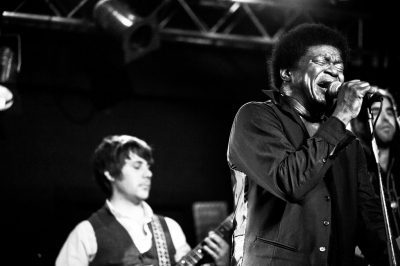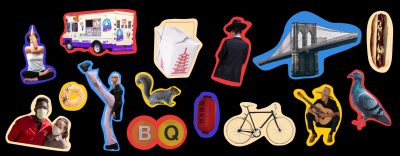Activist Greta Thunberg narrates a speech over a video with music by The 1975 (Charles Reagan for Undercurrent)
Bon Iver, Grimes, Miguel, Khruangbin tackle the climate crisis with interactive art
Undercurrent, a large new audiovisual exhibition exploring climate change, features installations from a host of well-known musicians
On the fifth floor of The Jefferson, a warehouse-like event space in Bushwick, a curtain leads into a blue-lit room with a circular art piece, stretching about 10 feet across, smack dab in the center.
It’s a replica of a Texas farm, surrounded by a series of fans. Spaced evenly around the centerpiece and connected to it by metal poles in the floor are several bicycles. As guests begin to pedal on them, the fans start to spin extremely fast and project hologram videos of the indie psychedelic rock band Khruangbin that swirl in and out of focus. Khruangbin’s music plays from speakers in the ceiling.
Outside the room, accompanying museum-style wall text explains that the band wants to make a statement about the possibilities of using human-generated energy.
The work is just one of the several installations that make up Undercurrent, a three-story audiovisual exhibition on the theme of climate change curated and produced by an array of well-known musicians—from folk singer-turned-electronic pioneer Bon Iver to pop star Miguel to the British soft rockers The 1975—that opens September 9 and runs through most of the month.
The 11 installations are all accompanied by original ambient music meant to complement the art (although in Bon Iver’s case, he uses a barely recognizable remix of his song “Naeem”), and they range broadly in style and sound. Some deal with specific issues, such as the buildup of plastic pollution in our water systems, while others focus on the broad harmful effects technology can wreak on natural ecosystems.
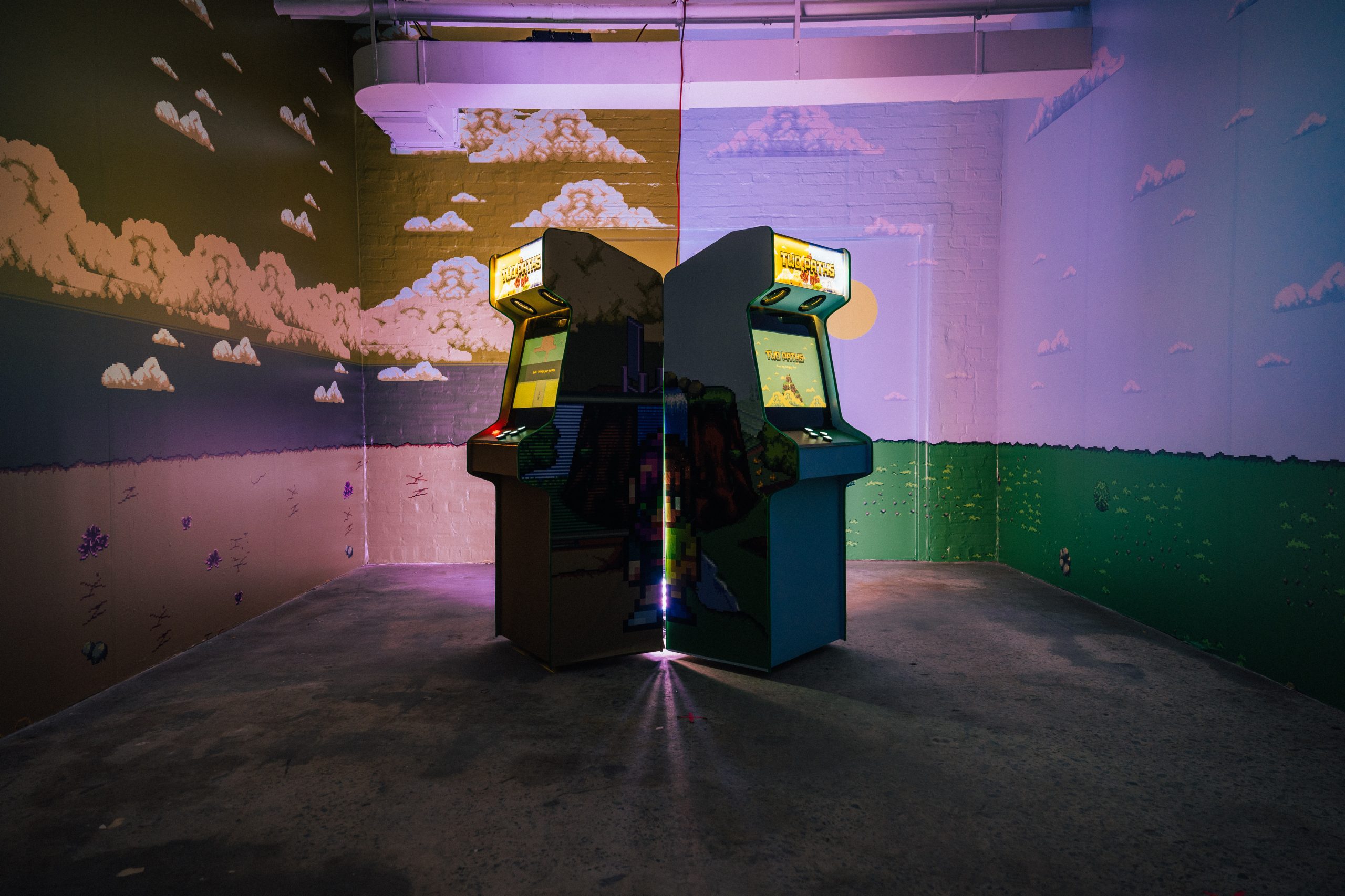
DJ Jayda G old school arcade consoles offer a new-school message (Charles Reagan for Undercurrent)
For instance, an animated music video from electropop singer Grimes features her androgynous digital alter-ego War Nymph trapped in a creepy, futuristic dystopia of sorts, a harrowing vision of a world without nature. Canadian DJ Jayda G—who has a master’s in environmental management—created a full-sized arcade-style video game with Pokémon-like visuals that guide players through a 10-minute narrative about how technology depletes soil nutrients. Activist Greta Thunberg narrates a speech over a video with music by The 1975.
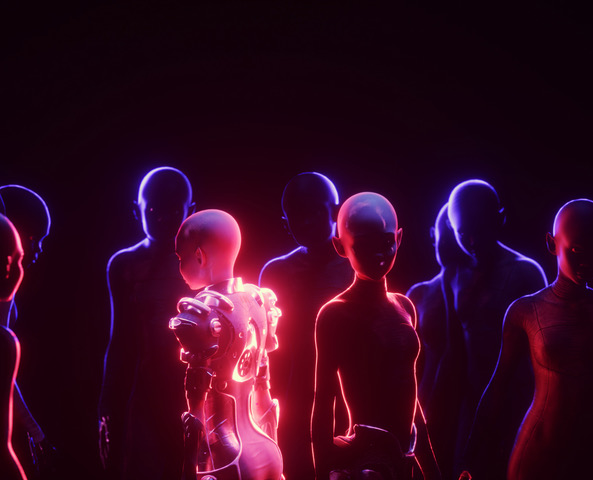

Grimes’ installation features her androgynous digital alter-ego War Nymph trapped in a creepy, futuristic dystopia (Charles Reagan for Undercurrent)
Miguel’s piece gets more specific by focusing on the disappearing coral reefs. White sculptures of reefs light up when visitors step into certain planes of the room, and the soft electronic music takes a happy turn when they linger there, taking in the beauty of the corals.
Miguel grew up in San Pedro, a waterside community home to part of the Port of Los Angeles. Preserving the gems of the ocean has become a passion.
“When you grew up by the water, and you’re in the water all the time, it becomes a big part of your life,” he tells Brooklyn Magazine.
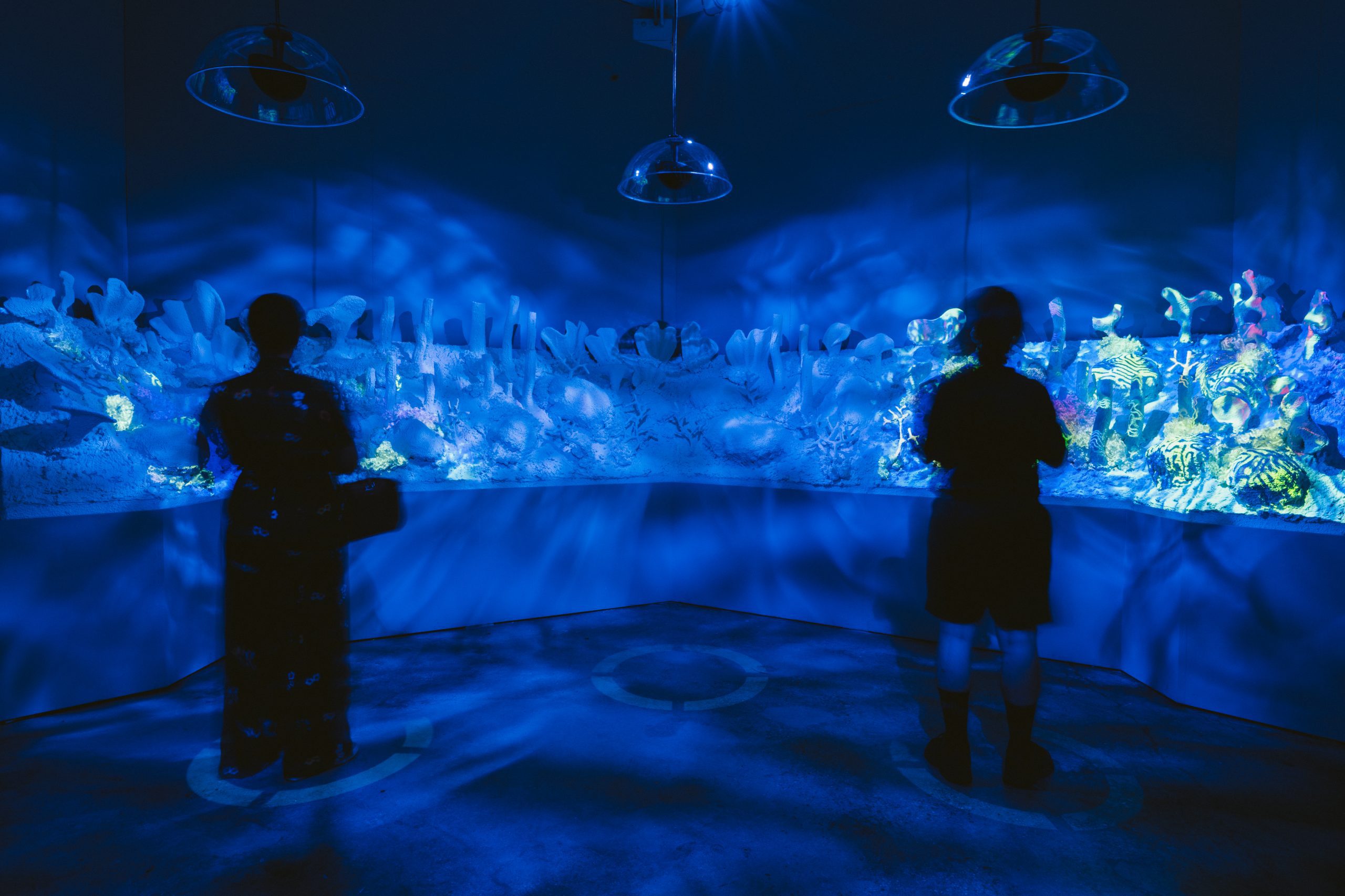

Miguel’s installation addresses the disappearing corral reefs (Charles Reagan for Undercurrent)
He notes that parts of the environment—especially bodies of water—are also often creative inspiration for musicians like himself.
“The ocean has always been a very big part of, I guess, my own philosophy, in its energy. Because there are so many analogies, so many ways to describe the ocean that correlate with just how life can be, you know?” he says. “I think my favorite [one] is life being unpredictable. And I don’t think there’s anything more unpredictable and powerful than the ocean.”
For $49 before tax, visitors can peruse all of the rooms at their own pace and in their own order—although attendants suggest routes recommended by the organizers. Along the way, walls are emblazoned with depressing facts about climate change in large font, and there’s information about the project’s multiple partner nonprofit organizations, from the Ocean Conservancy to Global Forest Regeneration (in addition to opportunities to scan one’s phone and learn more or donate). Taken as a whole, the full circuit takes 45 minutes or more, depending on viewing pace. The final floor features a lounge area with a cocktail bar, the drinks sourced by companies that use sustainably harvested ingredients (naturally).
It’s all the brainchild of Steve Milton and Brett Volker, who founded the companies Listen—which works on “sound branding” for companies such as Spotify, Skype and Sephora—and Ada, a New York-based creative agency that produces experiential events for musicians ranging from St. Vincent to Childish Gambino to Moses Sumney. Their work with Sumney, “an experiential, audiovisual installation… that offers an extension of his artistic and musical oeuvre, exploring isolation and our emotional relationship with technology,” is also currently on view at Pioneer Works in Red Hook.
The music industry and its touring complex has been repeatedly slammed for its greenhouse gas emissions, namely through all of the airplane and other travel.
“It’s really easy to be like ‘Oh, well I’m a musician, [it’s] so important that we travel around the world and take jet planes,’” Bon Iver’s Justin Vernon says in a video on the Undercurrent site. “So I think it’s important to stop, look at our own lack of perspective, and then let other people know too.”
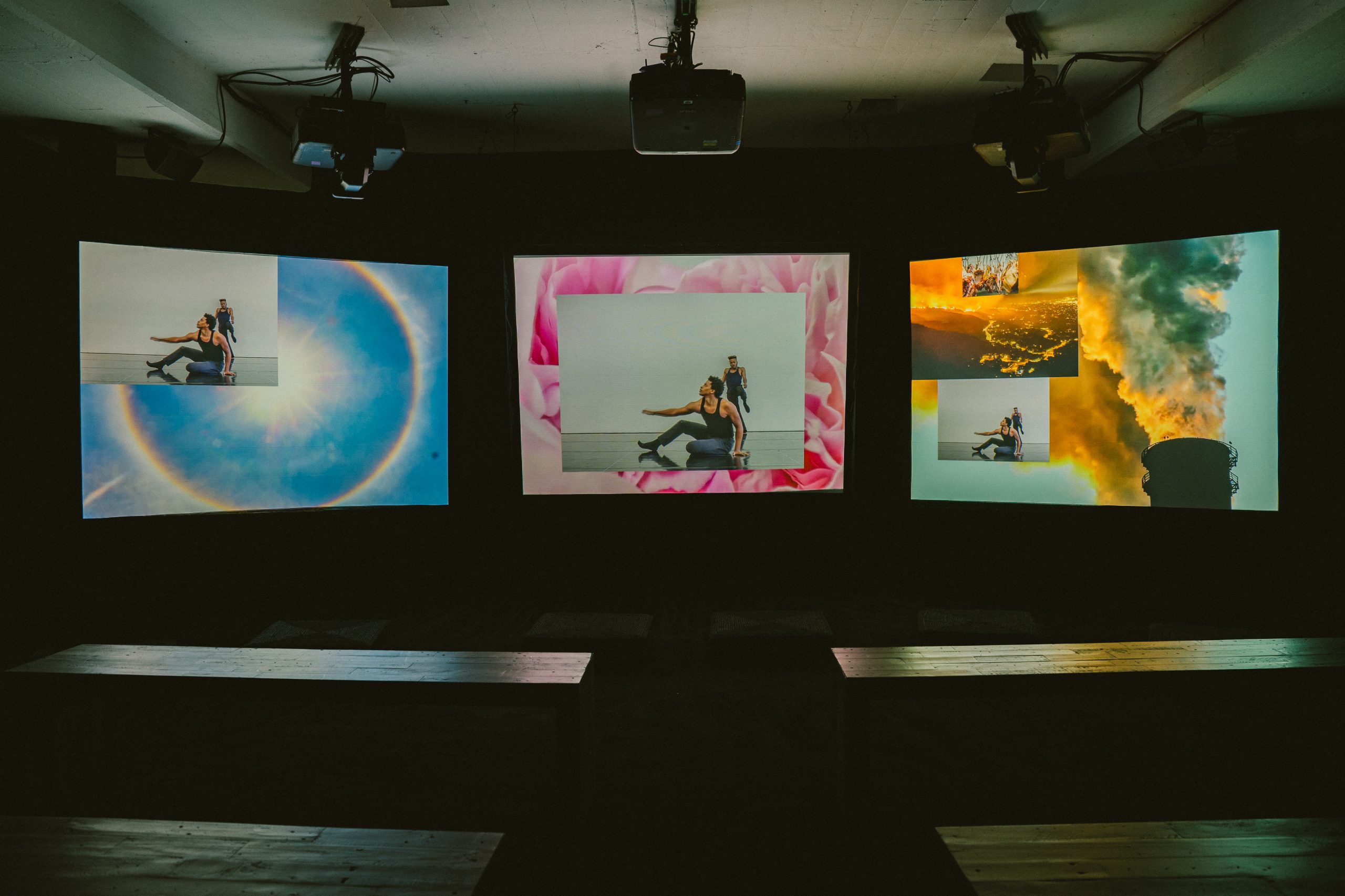

Bon Iver’s video installation (Charles Reagan for Undercurrent)
Milton and Volker acknowledge that there’s a growing awareness of it throughout the industry, and they wanted to give some artists an outlet to engage with the issues.
“The example we give is, what kind of car should I be buying? Should I buy an electric vehicle? Then you read an article that tells you that, you know, actually, that’s not going to be great for the planet, either,” says Milton. “It’s a really complicated complex thing in the music industry too: You have bigger, larger bands who have the luxury of saying ‘we’re not going to go on tour,’ but the mid-tier, even to the larger ones, they need to be touring, they need to get out there.”
While a portion of each ticket will go directly to each of the partner nonprofits, the pair say another big goal of Undercurrent, which was several years in the making, is not to bum people out, necessarily, but to jolt visitors out of complacency.
Some of the installations go to lengths to get disorienting. Bon Iver’s interpretative dance video features a series of rapidly changing images that can be difficult to follow; in pop artist’s Jorja Smith’s, which features walls made of plastic water bottles, visitors step from a heavily air conditioned section into a heated section.
Milton and Volker also want to tour this full exhibit around the country, and if it’s successful, to open up new versions on the same theme in different cities.
“We’re hoping people will walk away having had first of a really enjoyable, inspiring experience, and that it really elevates and progresses the conversations around climate, like tapping into some of that inaction that people can feel, and reinvigorate people to do what they can do in their day-to-day lives,” says Volker. “And that, third, it can make a meaningful impact for our nonprofit partners.”
You might also like 

















